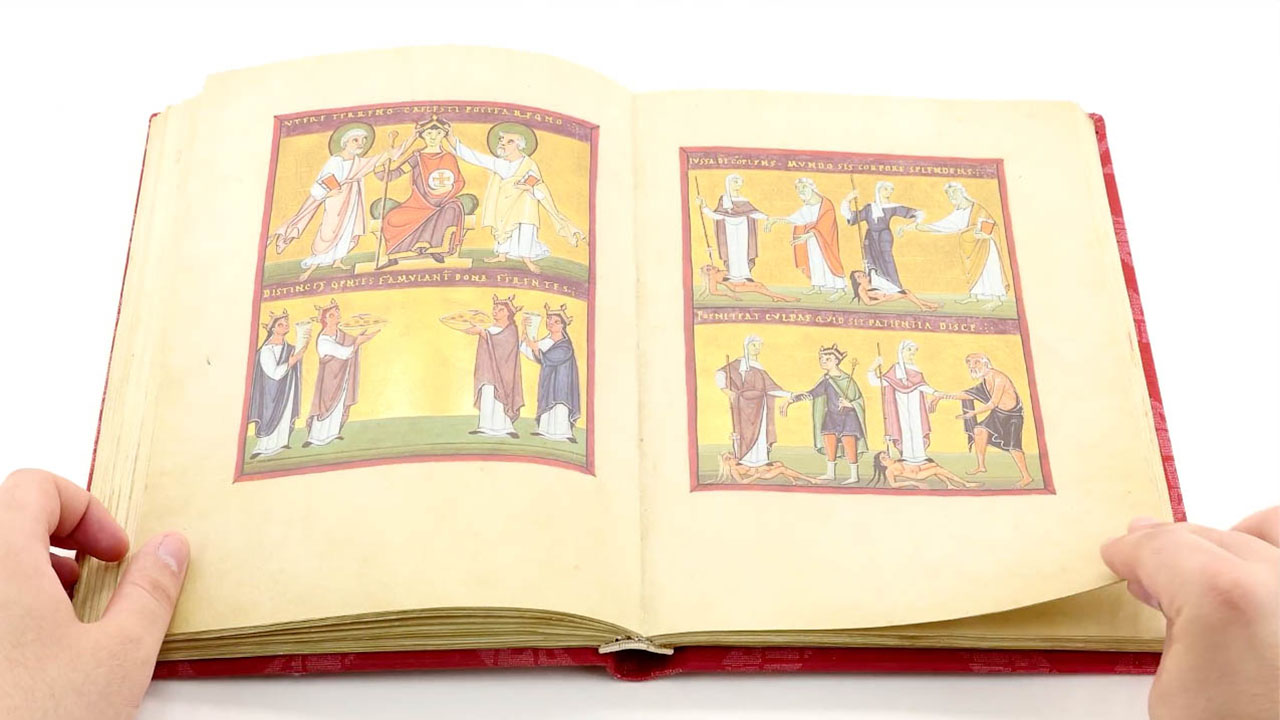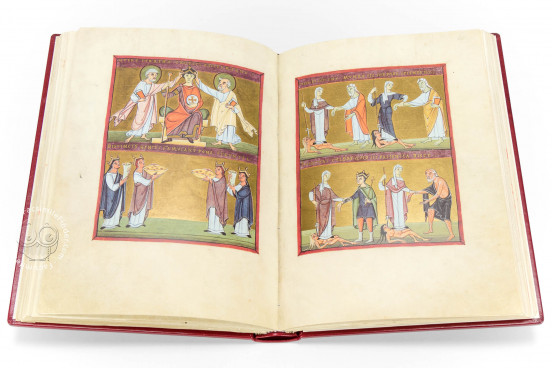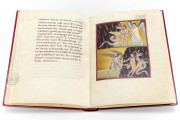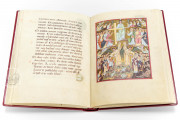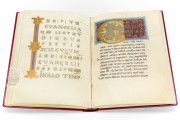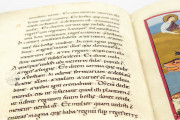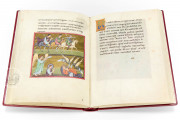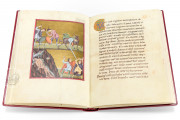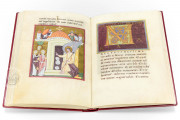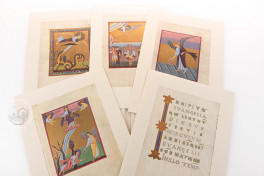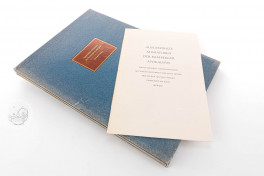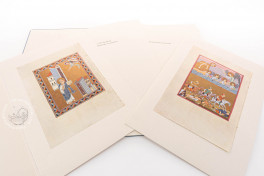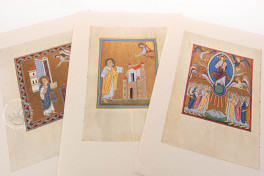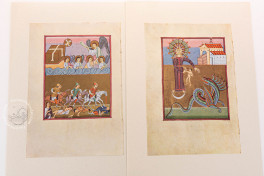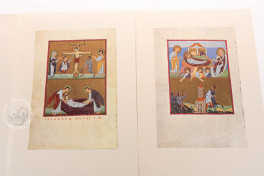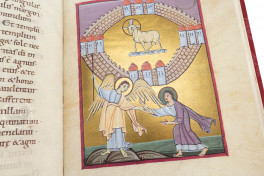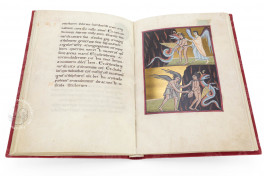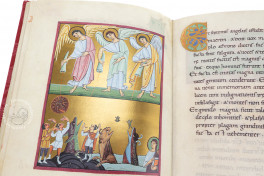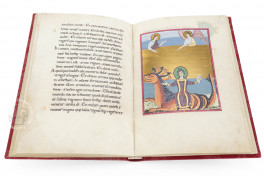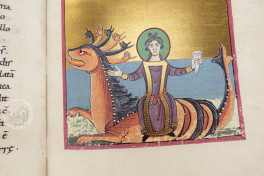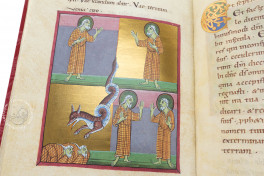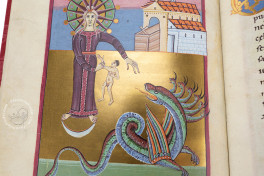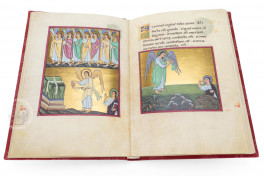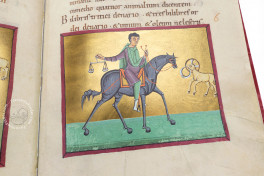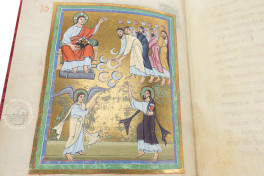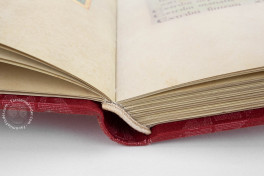Produced at the turn of the millennium on the order of the Emperor Otto III, the Bamberg Apocalypse is a masterwork of Ottonian book illumination. Created at the major cultural and artistic center of Reichenau abbey, the richly endowed manuscript is notable for its jewel-toned colors, gilded backgrounds, and intensity of gesture and movement. In addition to vivid illustrations of events from the life of Christ and of the end of the world, the luxurious book includes a remarkable representation of the young Otto III crowned by Saints Peter and Paul and given obeisance by personifications of the Empire. The only surviving example of an illuminated Apocalypse cycle in Ottonian art, the Bamberg Apocalypse is a crowning achievement of Ottonian political ideology.
The manuscript contains the Latin text of the Book of Revelation followed by a Lectionary that includes readings for major feasts from the Nativity to Pentecost. The book is not tailored to daily liturgical use. Its excellent state of preservation speaks to its main function as a splendid display object.
A Vibrant Tale of Divine Judgment
In addition to fifty illustrations of scenes from the Book of Revelation, the Bamberg Apocalypse includes five full-page miniatures, each preceding a Gospel reading, and over a hundred gilded initials. Between the Apocalypse and the Lectionary sections is the opening of a young Christ-like Otto III.
The paintings depart from the naturalism of the Carolingian tradition, instead favoring the schematized forms, hieratic scaling, symbolic or gold backgrounds, and crisp contours that are distinctive markers of Ottonian style.
Considered part of the Liuthar School of Reichenau abbey, the Bamberg Apocalypse is consistent in style, iconography, and script with two Gospel Books commissioned by Otto III, one held at Aachen (Aachen Cathedral Treasury, Inv. no. 25) and the other at Munich (Munich, Bayerische Staatsbibliothek, Clm. 4453), and the Pericopes of Henry II (Munich, Bayerische Staatsbibliothek, Clm. 4452).
Monks at the Service of the Empire
The text is written almost entirely in Caroline Miniscule and was executed by one primary and two secondary scribes. Each section opens with a colored and gold interlace initial.
The first line of each reading is written in gold uncials, and three of the readings as well as all tituli are in a display script of Rustic Capitals on purple ground. Like the illuminations, the script is consistent with other works of the Liuthar School.
A UNESCO Treasure
Unfinished at the time of Otto III’s death, the Bamberg Apocalypse was completed under his cousin and heir Henry II. The new Emperor, alongside Empress Cunigunde, donated the codex to the collegiate church of St. Stephen’s at Bamberg, perhaps on the occasion of the foundation and construction of the church around 1007–1009 or upon its dedication in 1020.
Following the secularization of St. Stephen’s, the book joined the Bamberg State Library in 1805. In 2004 the Bamberg Apocalypse, along with nine other illuminated manuscripts from Reichenau, was added to the UNESCO Memory of the World International Register.
Binding description
Originally, the silver gilt cover of the Bamberg Apocalypse was inscribed with the names Henry II and Cunigunde and was decorated with a large oval agate plate of Islamic origin surrounded by dozens of precious stones. While the rest of the cover was sold at auction, the central agate is kept at the treasury of the Munich Residence.
We have 3 facsimiles of the manuscript "Bamberg Apocalypse":
- Ausgewählte Miniaturen der Bamberger Apokalypse facsimile edition published by Insel Verlag, 1961
- Bamberger Apokalypse facsimile edition published by Faksimile Verlag, 2000
- L'Apocalisse di Bamberg facsimile edition published by Salerno Editrice, 2001

